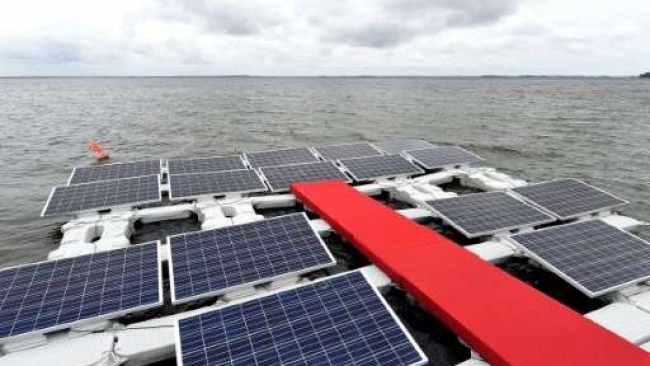Brazil uses dammed lake surface for floating solar panels

Two decades ago, a section of the Amazon rainforest was flooded for a dam that currently produces little electricity. Engineers now see that artificial lake as an ideal surface for floating solar panels.
Critics have blasted the Balbina dam, located near the equator line some 200 kilometers (125 miles) north of the Amazonian city of Manaus, as an environmental crime. The dam, which flooded some 2,400 square kilometers (930 square miles) of rainforest, was ordered built at great expense during Brazil's 1964-1985 military regime. The artificial lake is so vast that from the dam's wall, the horizon barely comes into view.
But when it comes to generating electricity, the dam is a bust: the Balbina hydroelectric plant, inaugurated in 1989 after a decade of work, currently produces a mere fifth of its maximum output of 250 megawatts. "This is one of the biggest environmental crimes that engineering has committed in this country," said Energy and Mining Minister Eduardo Braga. "How can we mitigate the cost of this crime? By improving the cost-benefit relationship of this power station," Braga said at the ceremony inaugurating the use of the first floating solar panels.
Floating solar panels are not new, but using them on a hydroelectric dam's artificial lake is novel.
This hybrid system uses the existing—and underutilized—power transmission infrastructure, as well as the flat water surface for the panels with no need to buy or expropriate new land.
Source: Phys.org
Mon 14 Mar 2016 at 08:11




(small).jpg)
